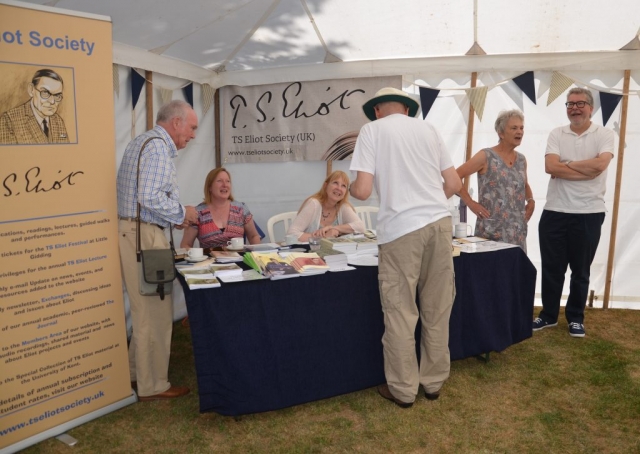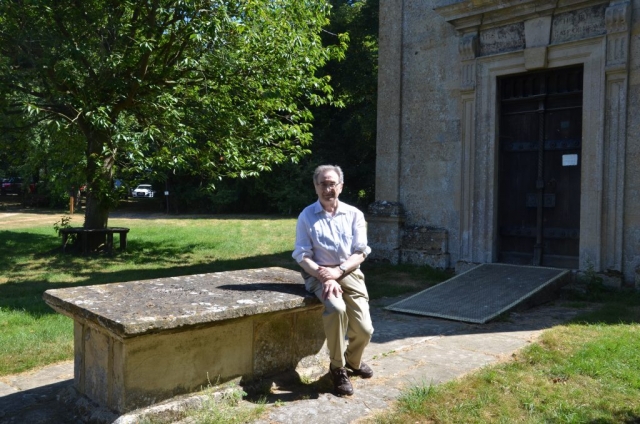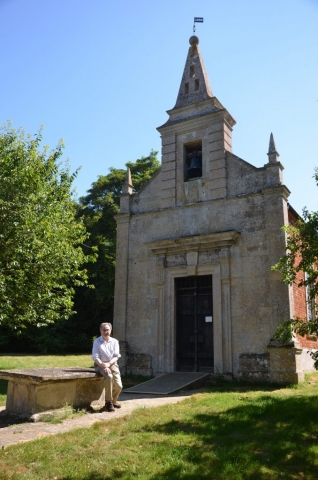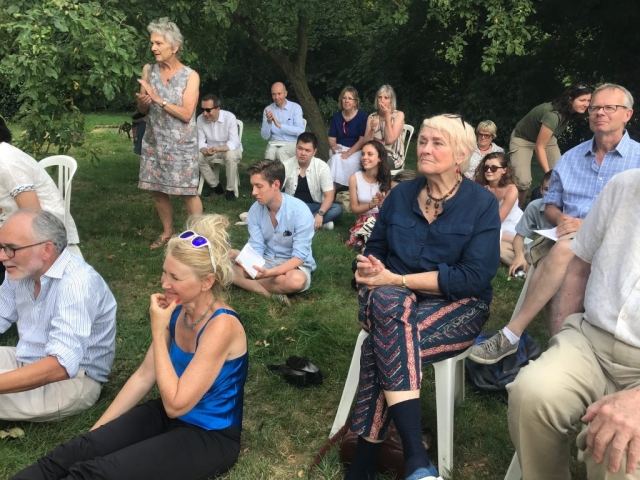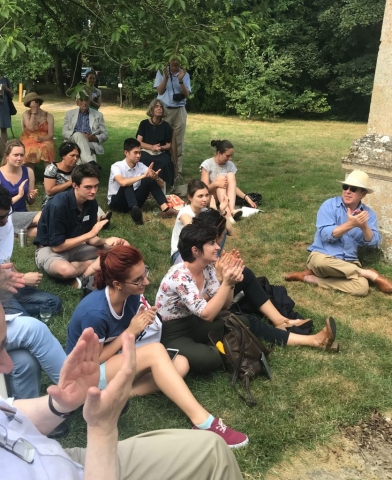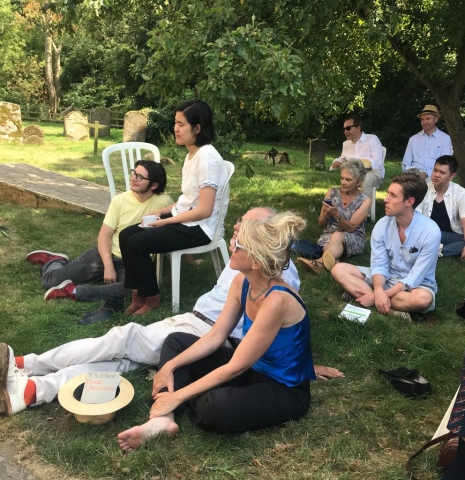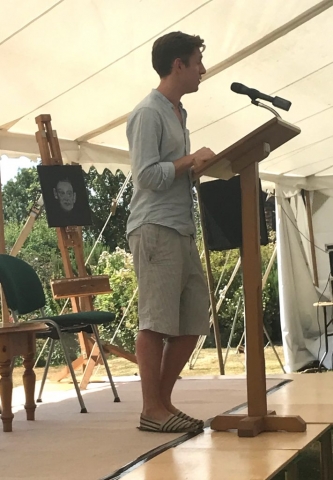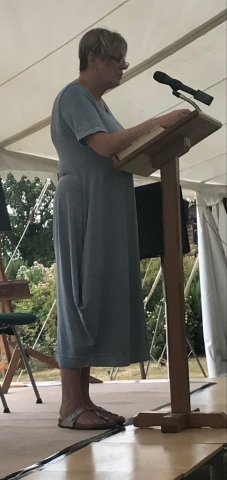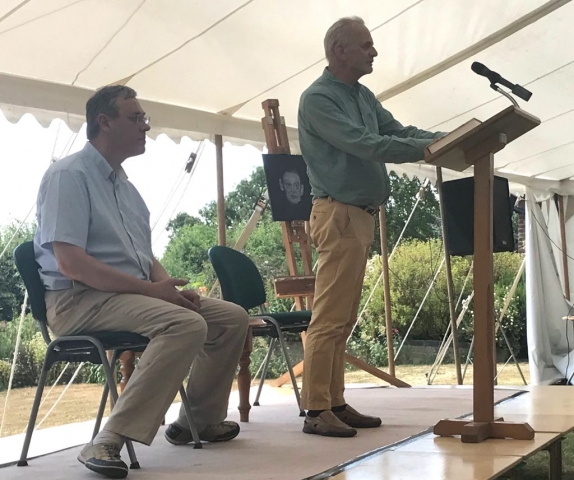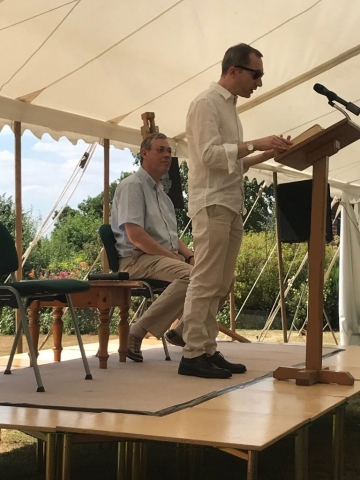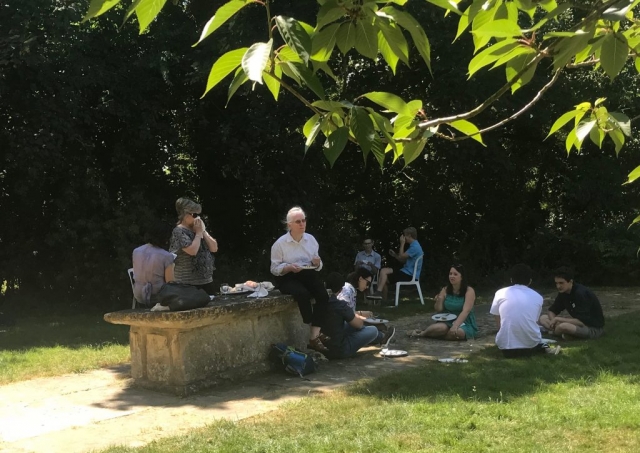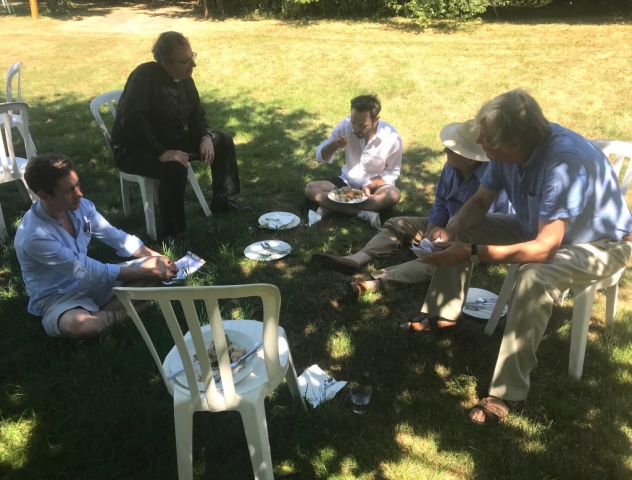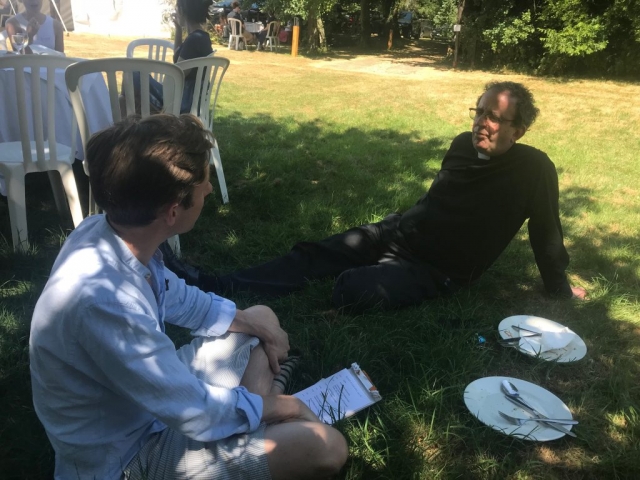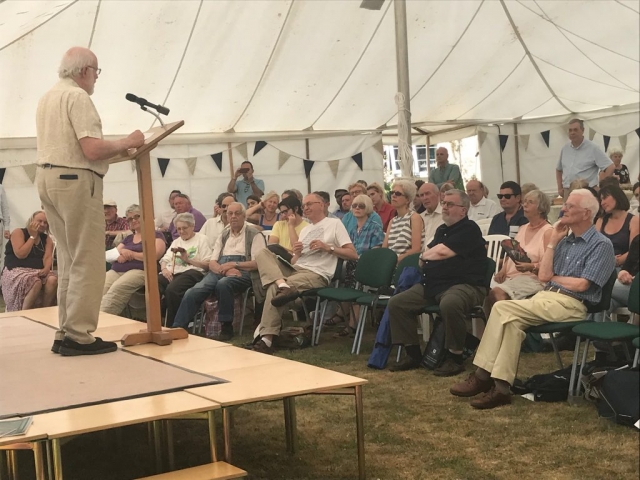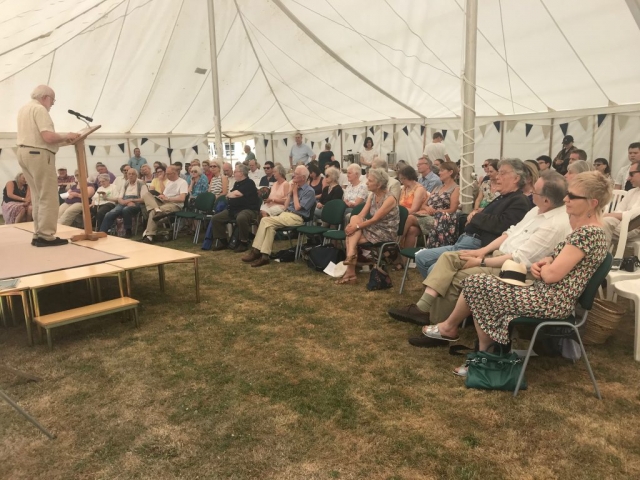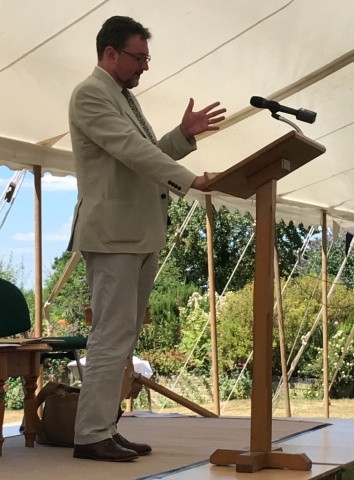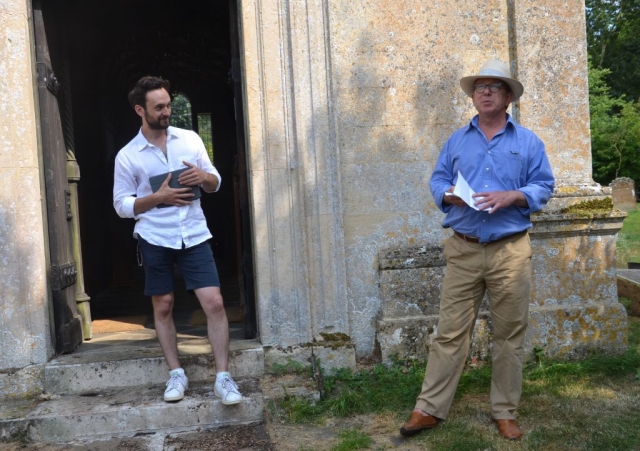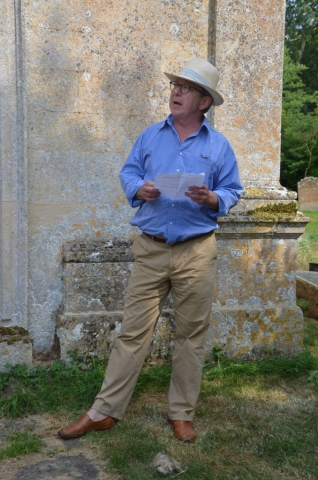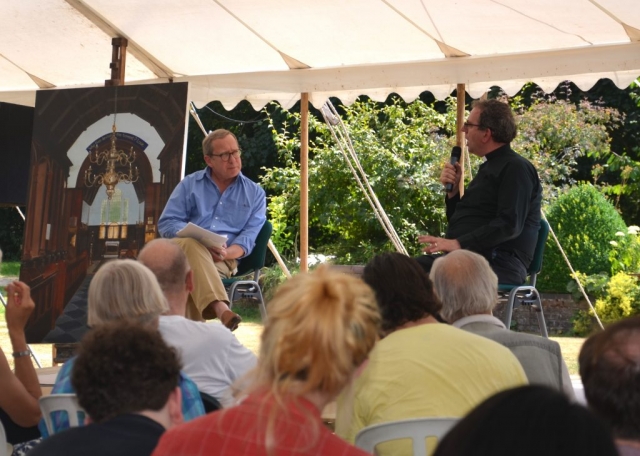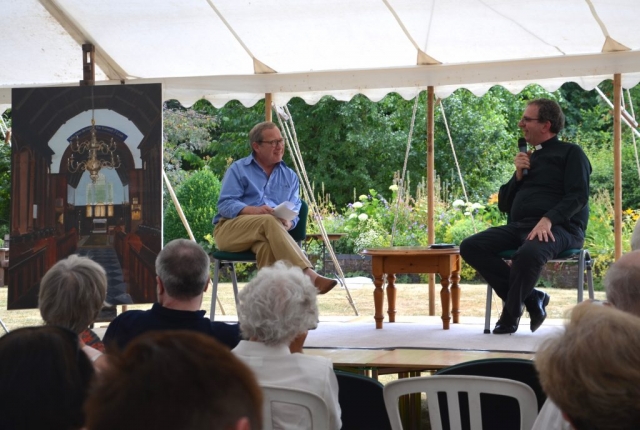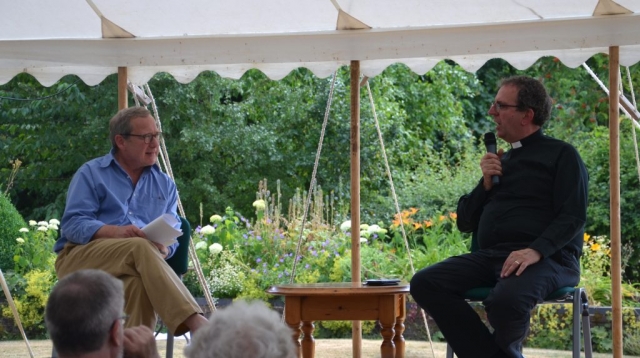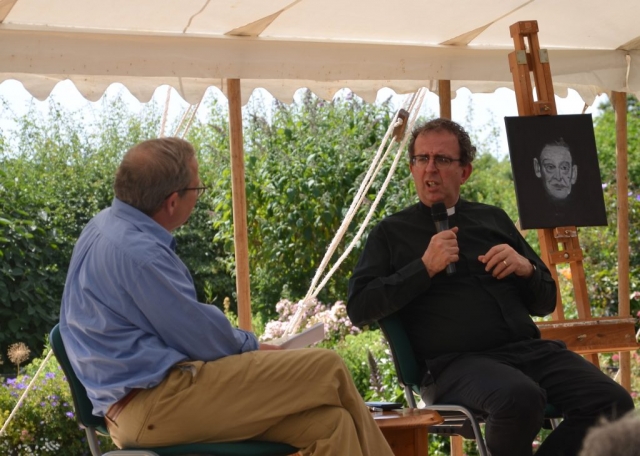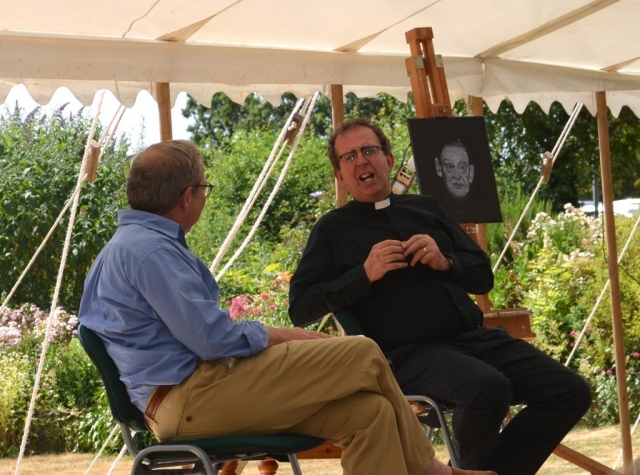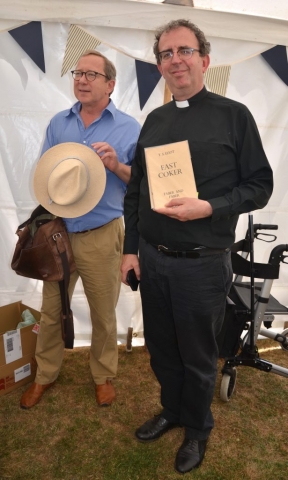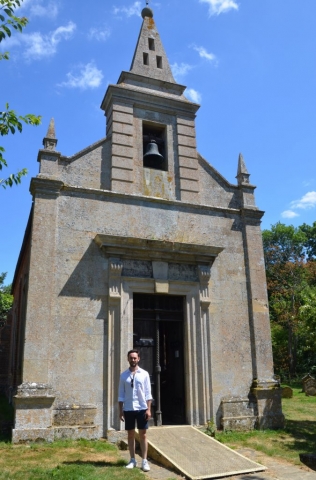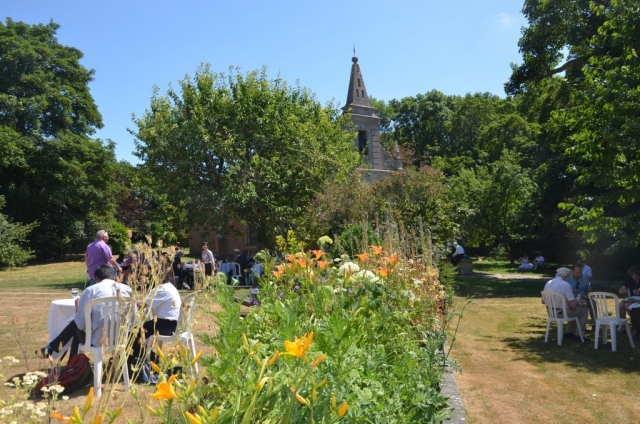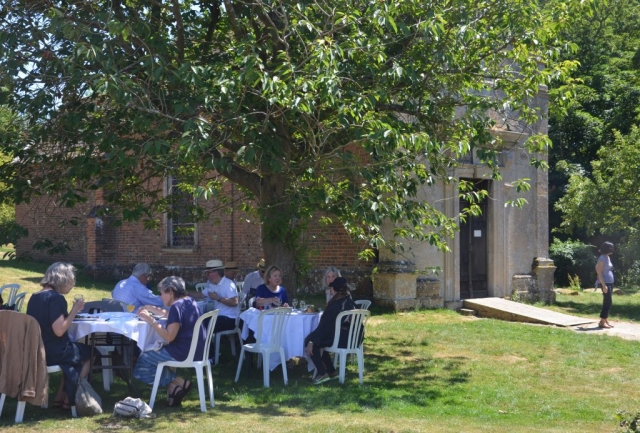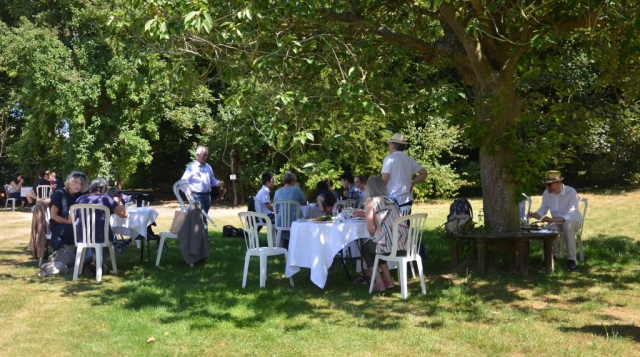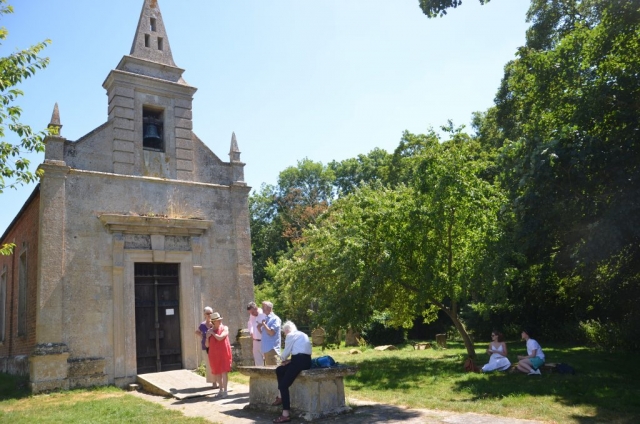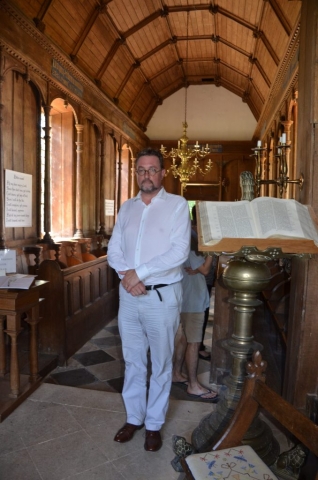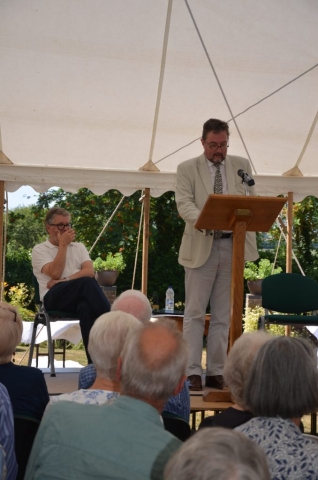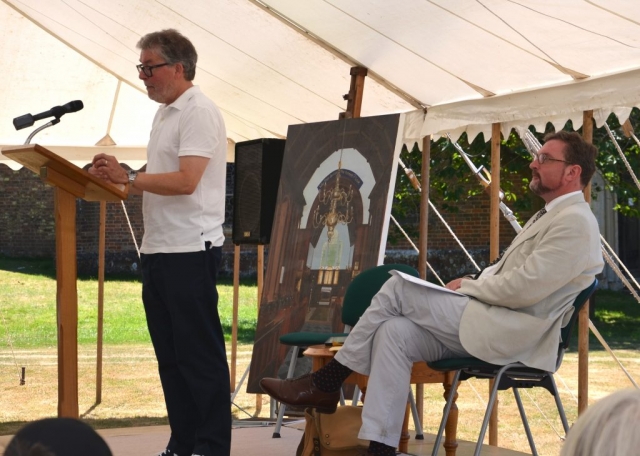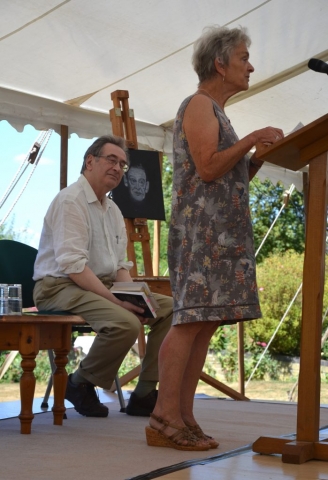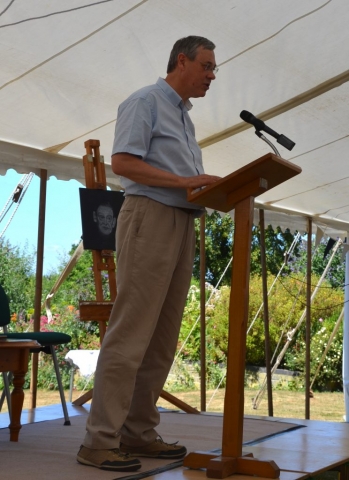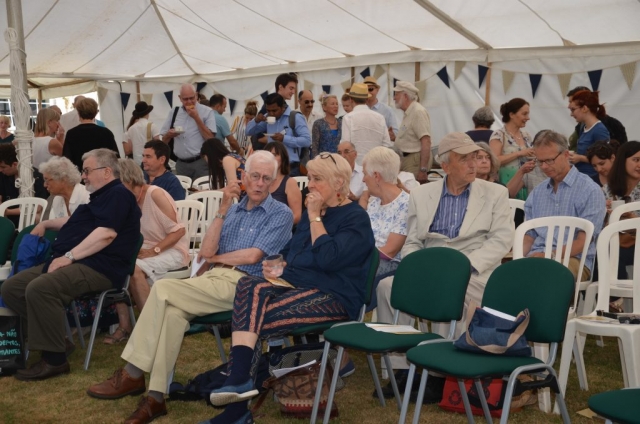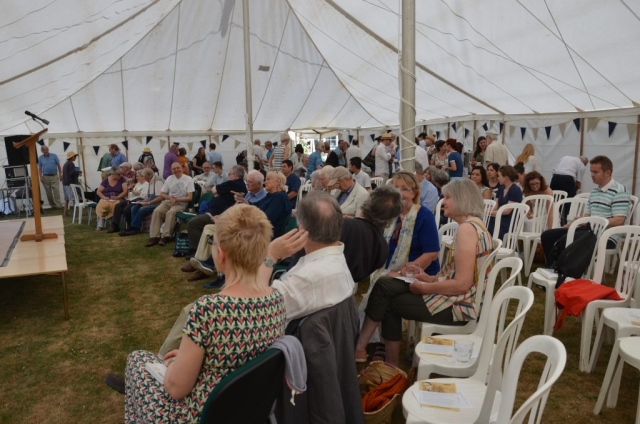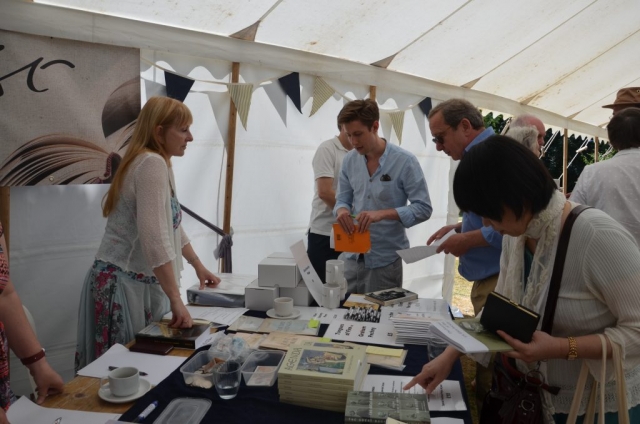T S Eliot Festival 2018
This year’s T S Eliot Festival at Little Gidding was held on Sunday 8 July 2018. Here is a selection of pictures by Carry Akroyd.
0 CommentsCentenary of the WW1 Armistice
Over the last few years the Church of England has published various liturgical resources for commemorating the centenary of significant moments in the First World War.
It has now added to that collection a set of resources for the centenary of the Armistice on 11 November, and entitled ‘Steps towards Reconciliation’: a monologue interspersed with words and music.
How are we to mark the end of a War in which so many lives were lost and damaged? We will certainly remember, but we must also commit ourselves afresh to working together for peace. Reconciliation requires an honest ‘truth telling’, and the text that follows seeks to respect the fact that we may only be able to take steps towards that goal.
This is an imaginative and thoughtful resource that can be used in a number of settings on and around 11 November 2018. It has been compiled by members of the Liturgical Commission.
The text is available as a pdf file here.
1 CommentTowards a Safer Church: Liturgical Resources
On Friday, the Liturgical Commission of the Church of England published “safeguarding resources, for use in churches across the country, including Bible readings, prayers and suggested hymns, chosen in consultation with survivors” under the title Towards a Safer Church: Liturgical Resources.
There is a press release here, and the liturgical resources are available in PDF format here
The Chair of the Liturgical Commission, Robert Atwell, Bishop of Exeter, in an introduction to the resources has written:
The Church needs to be at the vanguard of fostering a change of culture across society. Safeguarding is at the forefront of public consciousness and the Church needs to embody best practice in safeguarding in our network of parishes, schools and chaplaincies as part of our commitment to excellence in pastoral care.
Many of these resources are already being used widely across our churches, but we thought it would be helpful to gather them into one place for ease of access. Collectively they are neither the first word nor the last word on this subject, but they are offered in the hope that by God’s grace the Church may become a safer place where everyone is valued.
Libby Lane, Bishop of Stockport, has also written about the resources here
The resources have been compiled by the Liturgical Commission and staff, in consultation with survivors, who have themselves suggested some of the resources, with the aim providing prayers and other resources for various occasions. This includes use with survivors and others directly affected, as well as events such as the commissioning of safeguarding officers in parishes and dioceses. Most of the material had been previously published (including commended and authorized liturgical texts), but it has been brought together in one place so that it is easier to find and to use.
(This item has also been posted on the main Thinking Anglicans page.)
0 CommentsThinking about Yorkshire and Pudsey Surprise
I looked recently at the underlying structure of Cambridge Surprise on any number of bells (6 or more), and now I want to do the same with Yorkshire and Pudsey Surprise on any number (8 or more, since they are false on 6 bells, though still ringable as Yorkshire/Pudsey Block Delight Minor). This may well not directly help you to ring these methods, especially if you are just learning them. But understanding the structure of a method helps you know why you’re doing what you are doing, and what other bells are doing around you.
You might think Pudsey is a slightly odd choice to include immediately after Cambridge, but there’s a good reason why. In many ways it is the complement of Yorkshire: the changes each of these methods make, compared with Cambridge, are essentially identical except that they are made in different places.
The basic idea of Yorkshire and Pudsey is similar to Cambridge: the treble always treble-bob hunts in each dodging position (1–2, 3–4, 5–6, 7–8, etc); and wherever possible the other bells treble-bob hunt, but out of phase with the treble.
(See the article on Cambridge structure for a reminder of what it means to treble-bob hunt either in phase or out of phase with the treble.)
But Yorkshire and Pudsey each make one additional change to Cambridge. In each of them there is one bell that treble-bob hunts in phase with and adjacent to the treble, and the other bells have to deal with that bell as well as with the treble. The two methods differ only in which bell is in phase with the treble, and therefore in which places the extra adjustments must be made.
In Pudsey, it is the 3rd-place bell, which treble-bobs up to the back, dodging down with the treble and making places under the treble at the half-lead, and then dodging up with the treble and back down. Except when dodging with the treble at the back it is always one dodging position higher than the treble.
In Yorkshire, conversely, a bell treble-bobs down to the front, dodges up with the treble and makes 2nds place, and then dodges down with the treble and treble bobs out to the back. This bell treble bobs one dodging position lower than the treble. Whereas in Pudsey the work begins and ends when the treble is at the front, in Yorkshire it begins and ends when the treble is at the back, i.e. from the half-lead to the next half lead, and begins as the work of the 5th-place bell, which becomes the 2nd-place bell at the lead-end in the middle of this piece of work.
| Yorkshire | Pudsey | |||
| half-lead end | -----5-1 |
1-3----- |
lead end | |
----5-1- |
-1-3---- |
|||
-----5-1 |
1-3----- |
|||
----5-1- |
-1-3---- |
|||
| treble-bobs down to the front | ---5-1-- |
--1-3--- |
treble-bobs out to the back | |
--5-1--- |
---1-3-- |
|||
---5-1-- |
--1-3--- |
|||
--5-1--- |
---1-3-- |
|||
-5-1---- |
----1-3- |
|||
5-1----- |
-----1-3 |
|||
-5-1---- |
----1-3- |
|||
5-1----- |
-----1-3 |
|||
51------ |
------13 |
|||
15------ |
------31 |
|||
| where it dodges with the treble | 51------ |
------13 |
where it dodges with the treble | |
15------ |
------31 |
|||
| makes 2nd place over the treble | 12------ |
------31 |
makes (n‑1)th place under the treble | |
21------ |
------13 |
|||
| and dodges down with the treble | 12------ |
------31 |
and dodges up with the treble | |
21------ |
------13 |
|||
2-1----- |
-----1-3 |
|||
| and treble bobs out | -2-1---- |
----1-3- |
and treble bobs down | |
2-1----- |
-----1-3 |
|||
-2-1---- |
----1-3- |
|||
--2-1--- |
---1-3-- |
|||
---2-1-- |
--1-3--- |
|||
--2-1--- |
---1-3-- |
|||
---2-1-- |
--1-3--- |
|||
----2-1- |
-1-3---- |
|||
-----2-1 |
1-3----- |
|||
----2-1- |
-1-3---- |
|||
-----2-1 |
1-3----- |
|||
----2--1 |
1--3---- |
These two pieces of work are mirror images of each other.
Next, let’s consider one small but important point. In Yorkshire, the bell treble-bobbing in phase with the treble is below the treble. The other bells must change their behaviour (compared with Cambridge) whenever they meet this bell, and by definition that can only happen below the treble, since that’s where this in-phase treble bobbing happens. Whenever a bell is above the treble it behaves in exactly the same fashion as it would in Cambridge. That’s why Yorkshire is “Cambridge above the treble”.
In Pudsey, on the other hand, the bell treble-bobbing in-phase with the treble is above the treble. The other bells must adjust their behaviour when they meet this bell above the treble, so the changes from Cambridge occur above the treble, but below the treble Pudsey is the same as Cambridge.
Now let’s turn to the other bells. They are trying to treble-bob out of phase, so when they encounter these two bells (the treble and the bell in-phase with the treble) then they must adapt their work.
Because the two bells are in adjacent positions, we will dodge with one and plain hunt past the other, though which of these comes first depends on where we meet them. And in addition, we must also make places adjacent to the dodge to switch phase.
There are two possibilities.
We can either plain hunt past a bell, dodge with the other, and then make places and (now back out of phase) dodge again. Or else we do the opposite of this: after dodging out of phase, we make places to get in phase, dodge with one of the in-phase bells and then plain hunt past the other.
Which we do depends on whether we have already dodged when we meet the first of the two bells.
If we meet the first of the two bells after we have dodged, then they have not yet dodged, so we must make places to wait for them, dodge, and then pass through the next dodging position to get back out of phase, and then resume out-of-phase treble bobbing. (In the following diagrams the treble and the in-phase bell are labelled p and q; in Pudsey p is the treble and q the in-phase bell; in Yorkshire p is the in-phase bell and q is the treble.)
| when going down to the front |
when going out to the back |
||
p-q--x-- |
--x--p-q |
||
-p-qx--- |
---xp-q- |
||
p-q-x--- |
---x-p-q |
||
-p-q-x-- |
--x-p-q- |
||
--p-qx-- |
--xp-q-- |
||
---pxq-- |
--pxq--- |
||
--p-qx-- |
--xp-q-- |
||
---pxq-- |
--pxq--- |
||
---xp-q- |
-p-qx--- |
||
--x--p-q |
p-q--x-- |
||
-x--p-q- |
-p-q--x- |
||
x----p-q |
p-q----x |
||
-x----pq |
pq----x- |
||
x-----qp |
qp-----x |
||
| Alternatively, if we meet the two bells before we have dodged, then they have already dodged and one of them is about to come into our current position so we must miss a dodge and go straight on to dodge with the other one, and having done so, make places to get back out of phase and resume out-of-phase treble-bobbing: | |||
p-q--x-- |
--x--p-q |
||
-p-qx--- |
---xp-q- |
||
--pxq--- |
---pxq-- |
||
--xp-q-- |
--p-qx-- |
||
--pxq--- |
---pxq-- |
||
--xp-q-- |
--p-qx-- |
||
--x-p-q- |
-p-q-x-- |
||
---x-p-q |
p-q-x--- |
||
---xp-q- |
-p-qx--- |
||
--x--p-q |
p-q--x-- |
||
---x--pq |
pq--x--- |
||
--x---qp |
qp---x-- |
||
There’s one more detail before we have enough information to understand each of these methods. If we are about to meet the treble or in-phase bell at the back, when we are in the topmost dodging position, then rather than missing a dodge or making places to get in phase we add an extra dodge. We’ve already seen this in Cambridge when we were about to meet the treble and we were at the back. Yorkshire here is identical to Cambridge (because we are above the treble), but in Pudsey this also applies when meeting the in-phase bell, so we must do these double dodges when about to meet that bell. And because the method is symmetrical, when we said “about to meet”, the same applies when “reaching the back having just met”, as it does in Cambridge.
In the full article, we’ll look at the details of Yorkshire, then at Pudsey, and then do a final comparison of the two methods.
0 CommentsThinking about Yorkshire Surprise
I looked recently at the underlying structure of Cambridge Surprise on any number of bells (6 or more), and now I want to do the same with Yorkshire Surprise on any number (8 or more, since it is false on 6 bells).
The basic idea of Yorkshire is similar to Cambridge: the treble always treble-bob hunts in each dodging position (1–2, 3–4, 5–6, 7–8, etc), and wherever possible the other bells treble-bob hunt, but out of phase with the treble.
(See the article on Cambridge structure for a reminder of what it means to treble-bob hunt either in phase or out of phase with the treble.)
In Yorkshire there is an exception to this out-of-phase treble bobbing: starting when the treble is dodging at the back, one of the bells treble-bobs in phase with the treble and one dodging position below it, making 2nd place over the treble at the lead-end, and continuing in phase until the treble reaches the back again.
Everything else in Yorkshire is a consequence of this change from Cambridge.
The bell that starts doing this in-phase treble bobbing is the 5th-place bell, from the half-lead when it has passed the treble at the back, and continuing as the 2nd-place bell until the half-lead as it approaches the back. For brevity, I call this piece of work the in-phase bell, because it is treble-bob hunting in phase with the treble. (This isn’t a shorthand I have come across elsewhere, but it is a convenient term.)
Because the treble and the in-phase bell are in adjacent dodging positions, the other bells meet the in-phase bell immediately before or immediately after meeting the treble, They must either pass it or dodge with it, just as they do with the treble.
Remember that in Cambridge places a bell dodges with the treble in the middle of the work, making places either side of that dodge in order first to get in phase with the treble, and then to get back out of phase. But in Yorkshire there is immediately another in-phase bell to deal with: so if we have dodged with the treble we must curtail Cambridge places to pass the in-phase bell. Or alternatively, if it’s the treble that is passed, then we must dodge with the in-phase bell and make places to change phase. This changes Cambridge places into Yorkshire places and also adds them in positions where in Cambridge you just plain hunt past the treble.
Let’s see what that means in practice.
0 CommentsLooking at Cambridge Surprise (again)
I’ve been ringing Cambridge Surprise for quite a few years now. I began with Minor (in 2005), learning the various pieces of work by rote. Then when I could do that I moved on to Major (in 2006), again, learning by rote the bits that were different from Minor. Then I got to the point that I could barely remember how to ring Minor, because I always forgot which bits of Major to leave out. I’ve got over that too, and recently have begun to ring Minor a bit more, because we have ringers who have moved on to learning it.
All of which sparked an interest in learning Cambridge Surprise Royal, i.e. on 10 bells. (Ringing it would be a rather different matter as I’m not a ten-bell ringer, and although I have rung Caters a handful of times, I’ve never rung Royal. But I want to stick with the theory for a bit.)
So I looked up the blue line for Cambridge Surprise Royal, and in searching for it I came instead across descriptions of Cambridge, and I realized I had been missing something about Cambridge all these years. The sort of thing that makes me wonder whether I could have learnt the method in a much better way — rather than learning sections by rote, and then re-learning it by place bells, instead learning it and ringing it from first principles. Because the principle behind Cambridge, on any number of bells, is quite simple.
Here it is:
- the treble always treble-bob hunts from the front, out to the back where it lies behind and then treble-bob hunts down to the front again; and it does this over and over again, (n‑1) times in a plain course, where n is the number of bells (6 for Minor, 8 for Major, 10 for Royal, etc).
- each of the other bells also treble-bob hunts, but it does so “out of phase” with the treble. This means that whenever it meets the treble, it must change its pattern of treble-bob hunting to fit around the treble.
What do we mean by treble-bob hunting “out of phase”, and what are the consequences of this?
1 Comment
